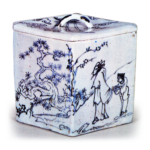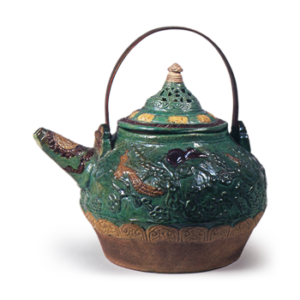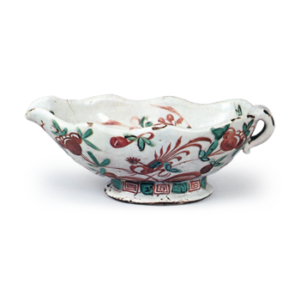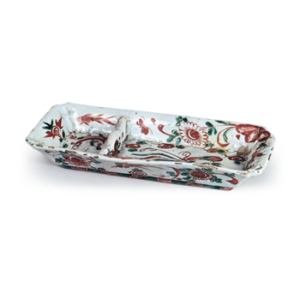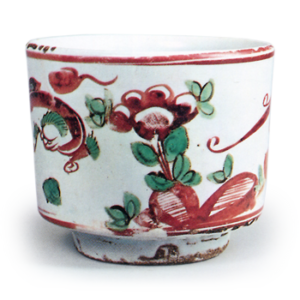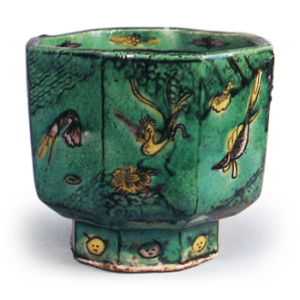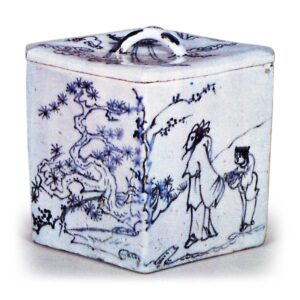
Name of a mineral containing a cobalt compound. It is black with a blue-green tinge, like sand. It is dissolved in water to a very fine powder and used to draw patterns on porcelain, which is then glazed and fired to produce an indigo blue color. It is therefore also called aoe-glaze. The indigo design on a vessel is called “aoe,” “some-suke,” “aobana,” or “gozu-te,” but “gozu” is the name of a coloring agent. However, gozu is not only the name of a coloring material, but also refers to a type of porcelain and a decorative style. The word gosu is probably not indigenous to Japan, but is a transliteration of a word from southern China or Korea. The term “gosu” is used to refer to underglaze blue porcelain, and the term “gosu-ka-e” refers to porcelain with reddish-green overglaze enamel decoration, so it may be understood that the term “gosu” is generally used to refer to ceramics with colored underglaze blue enamel decoration. The term “gosu-te” refers to porcelain with a slightly blackish coloring, simple patterns, and crude manufacturing techniques. Less exquisite blue-and-white porcelain, or a type of crude white porcelain with simple overglaze painting patterns, is called akagose (red glaze), akae-gose (red glaze), or ao-gose (blue glaze). White gosu refers to thick, shaggy, crude porcelain with no design. Gosu as a coloring medium is the most important of all ceramic coloring materials and is used more than the sum of all other colors. Chinese bowl flowers, stone flowers, suyi boqing, huiqing, 韭細辺, 頂円子, 老円子, painted blue, mumyoji, black ochre, 石子青, stone blue, etc. are all made of gosu. When fired by oxidizing fire, gosu has a dark tone with an unpleasant black tinge, while when fired by reducing fire, the colors are vivid. The blue tone is also highly related to the composition of the clay and glaze. If the clay has a high silicic acid content, the gosu is easily disturbed and the color takes on a black tinge. If the glaze contains too much alanite, the violet blue color becomes brighter, and if it contains zinc, the indigo blue color becomes more vivid. Glazes containing too much silicate, too much lime, or too much (magnesium oxide) may darken the color of gosu. The degree of fusion of the body and glaze also has a great influence on the color tone. See the article “Underglaze High-fired Paints” in the “Paints” section.

